Making and Using Compost in the Garden
Using compost in the landscape
Authors: Christine Wen, Joe Van Rossum
Rev: 2013
Item number: A4021
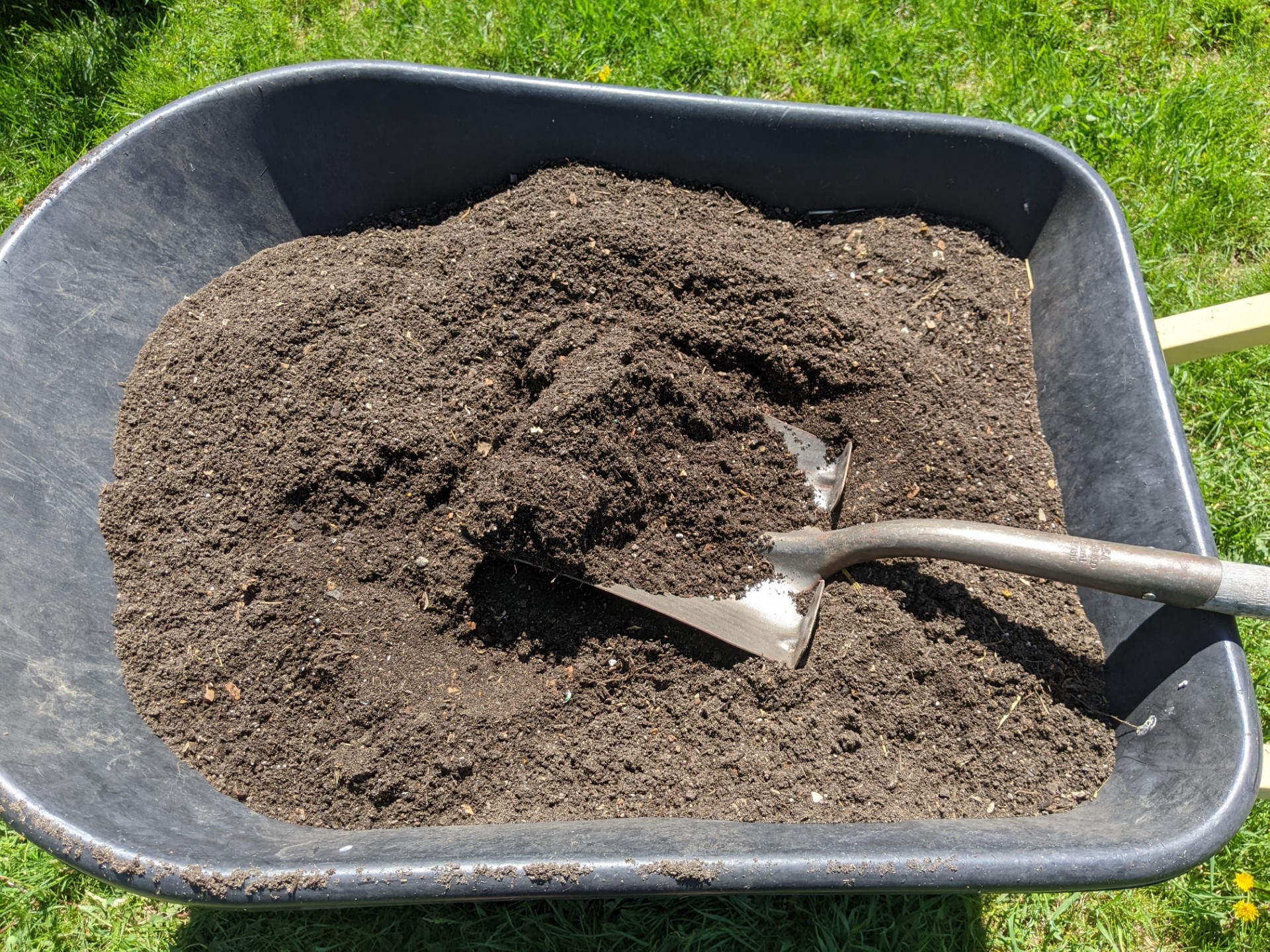
Introduction
Making your own compost is an easy, practical, and satisfying way to make use of yard waste and table scraps. Home composting can reduce the use of water and synthetic fertilizers while improving the health of your soil and plants. For gardeners who live in areas where laws and ordinances limit or prohibit the disposal of leaves and yard clippings into landfills, composting is a sensible alternative.
Compost is a humus-rich organic soil amendment that contains nutrients essential for plant growth. These nutrients are a result of the microbial decomposition of biodegradable materials — food scraps, paper materials, yard waste — that have been piled, mixed, and moistened.
How to make compost
Start by choosing a site that is convenient and receives about 5 to 8 hours of sun. Let’s face it — the easier the compost pile is to get to, the more likely adding materials will become a habit rather than a chore!
After you have decided where to place the compost, decide if you will keep your compost in a pile, a simple bin made out of wood or chicken wire, or a manufactured compost unit. Lids are not necessary, but they can prevent nuisance animals from getting into the compost.
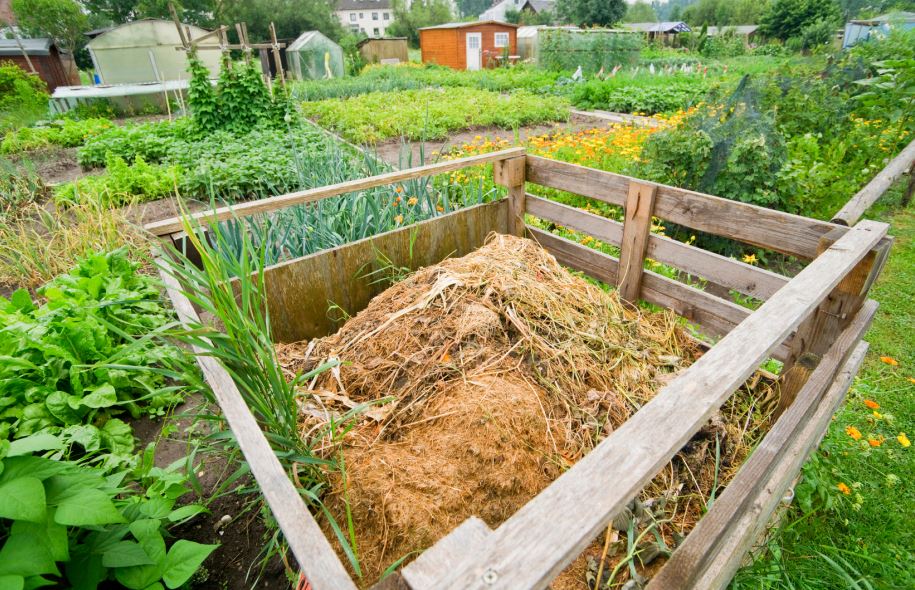
Begin composting by adding materials such as leaves, garden debris, eggshells, chopped or shredded branches, grass clippings, vegetable and fruit scraps, and coffee grounds. Microorganisms in your compost will feed on these organic materials for energy, using air and water through a process called aerobic respiration.
Microorganisms metabolize best with a diet of two parts brown materials to one part green. Having the proper ratio of ingredients will increase the rate of decomposition. The pile needs to be at least 3 x 3 x 3 feet in size to heat up properly.
Once the pile is created, decomposition begins and the microorganism population expands quickly. To jump-start the process, add a shovel full of garden soil or compost, which typically includes thousands of naturally occurring microorganisms.
A compost thermometer will help you track temperatures within the pile as the microorganisms break down organic materials, releasing carbon dioxide and heat. The pile’s temperature continues to increase as the microorganisms metabolize the added materials. Temperatures in the center of the pile can reach 135 to 160˚F in a rather short period of time.
Mature compost has reached an internal temperature of 105˚F or higher for five consecutive days; the temperature should exceed 130˚F for four hours to eliminate weed seeds, insect eggs, and diseases.
Once the pile has reached maximum temperatures, the pile will need to be turned. Mixing or turning the pile completely every week or so introduces new food sources and increases air circulation to the microorganisms working in the warmer central portion of the pile. A pitchfork works great, but other tools are available.
Add water as you turn your pile during periods of little rain and when you add new materials — your compost pile should feel as damp as a wrung-out sponge. You might spot soil animals such as earthworms, sow bugs, ground beetles, and springtails, all of which play a role in decomposition.
Once all the available organic materials are broken down, the pile enters the curing stage. Microorganism activity dramatically decreases, causing the pile to cool. At this stage most of the materials are broken down into compost that is ready to be used in the garden. By maintaining your pile properly, the finished compost should be ready to use in about four to five months. At this point all the materials added will be unrecognizable and the compost will be fairly moist, with a rich dark brown color and an earthy smell.
The science of compost
The three major microorganisms present in a compost pile are bacteria, actinomycetes, and fungi. Populations of these organisms fluctuate during decomposition and work differently as the temperature changes in the compost pile. From 0 to 55˚F, bacteria and fungi initiate the decomposition process. When the pile reaches 40˚F, bacteria and fungi activity increase dramatically until the temperature reaches 90˚F, at which point actinomycetes take over as decomposition continues.
Materials for composting
|
Brown materials |
Green materials |
Do not compost |
|
|
|
|
* Caution: Do not compost with yard waste treated with pesticides, insecticides, herbicides, or fungicides ** Adding wood ash is risky as it’s easy to overdo *** Black walnut leaves contain juglone, a compound that can be harmful to other plants |
||
Common compost problems
|
Problem |
Solution |
|
Your compost pile smells bad. |
Too much water or too many nitrogen-rich green materials may cause the pile to have a bad odor. Add more brown materials and turn the pile. |
| Your compost pile isn’t heating up; in fact, nothing seems to be happening. | Too much brown material or not enough water may have slowed your pile’s rate of decomposition. Turn in more green materials and add water, if needed. |
▶ Watch: Composting Basics
Have you ever wondered about making your compost? In this overview of composting basics, find out the do’s, the don’ts, and what happens to compost over winter so you can successfully recycle your lawn, garden and food waste.
Download: Handout for Video Recording
Using compost in the landscape
Compost has many uses in the landscape. Incorporating compost is an excellent way to amend your soil’s overall health. Compost slowly works into the soil and provides slow-release nutrients to plants. It also moderates soil temperature, improves soil drainage, fertility, and structure, and can suppress weeds.
- In clay soils, the introduction of compost will loosen the soil and make nutrients more available to plant roots.
- In sandy soils, adding compost increases water retention and provides important nutrients that otherwise may not be available.
With ornamental plants, use compost just as you would bark or other mulch; apply a 2- to 3-inch layer between plants, shrubs, and trees, keeping it about 1 to 2 inches away from tree trunks and shrub and plant stems.
To improve your lawn, use compost as a topdressing.
Add compost to your vegetable garden prior to tilling or as mulch on the top of the soil:
- If you till a 2-inch layer of compost into the soil prior to planting, the compost will be incorporated into the soil and the nutrients will be available to the plants more quickly.
- For those who prefer a no-till or partial till option in the vegetable garden, compost can be used as mulch. Apply a 2- to 3-inch layer between plants, no closer than 1 to 2 inches from the plant’s base.
No matter how you compost or what you do with it, the important thing to remember is that your efforts are benefiting your soil and plants and keeping reusable yard waste and food scraps out of the landfill.
Tree planting note: Do not add compost when planting a tree, as this can cause root restriction—always backfill with the original soil you removed from the hole.
Alternative compost sources
Municipal compost
Need more compost than you can produce at home? Compost is readily available at most gardening, home improvement, and hardware stores. Many areas offer their own compost to the public, but tread cautiously: municipal compost may contain persistent weed seeds or residue chemicals from yard waste. Ask your local municipality about their compost management process and how they handle yard waste.
Mushroom compost
Mushroom compost, the by-product of what mushroom farmers use to grow mushrooms on, has become very popular… and for good reason! It’s an attractive dark color, high in nutrients, fairly lightweight, easy to work with, and largely weed-free. It makes a great mulch in landscape beds and vegetable gardens, and you can use it in raised beds and container plantings as well. Many landscape centers and retailers sell it in bulk, and a few mushroom farms in Wisconsin sell it direct to the public.
Resources
Extension publications
Extension publications are available to view or download at the Learning Store.
Do-it-yourself Alternative Lawn Care (A3964)
Also available in Spanish: Cuidado alternativo del césped tipo “hágalo usted mismo” (A3964S)
Do-It-Yourself Compost Bins series
- Barrel Composter (G4020-01)
- Can Composter (G4020-02)
- Concrete Block Composter (G4020-03)
- Wire Mesh Composter (G4020-04)
- Wood and Wire Composter (G4020-05)
- Wood Pallet Composter (G4020-06)
Mulches for Home Gardens and Plantings
Selecting, Planting, and Caring for Your Shade Trees (A3067)
Using Industrial Wood Ash as a Soil Amendment (A3635)
Other publications
Check on Composting: Wastes to Resources, Jean Bonhotal and Marianne Krasny, 4-H Leader’s/Teacher’s guide with Cornell Cooperative Extension
Worms Eat My Garbage: How to Set Up and Maintain a Worm Composting System, Mary Appelhoff
Online resources
Mushroom Compost – “Using Spent Mushroom Substrate,” Penn State.
U.S. Composting Council – compostingcouncil.org
Wisconsin Department of Natural Resources – Composting rules and regulations in Wisconsin





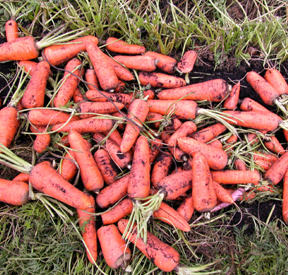 Safely Using Manure in the Garden
Safely Using Manure in the Garden Using Crop Rotation in Home Vegetable Garden
Using Crop Rotation in Home Vegetable Garden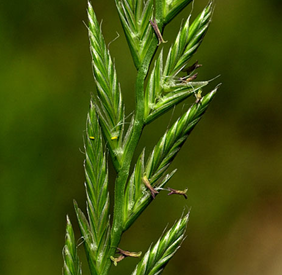 Using Cover Crops and Green Manures in the Home Vegetable Garden
Using Cover Crops and Green Manures in the Home Vegetable Garden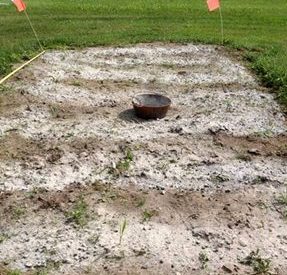 Using Wood Ash in the Home Garden
Using Wood Ash in the Home Garden


